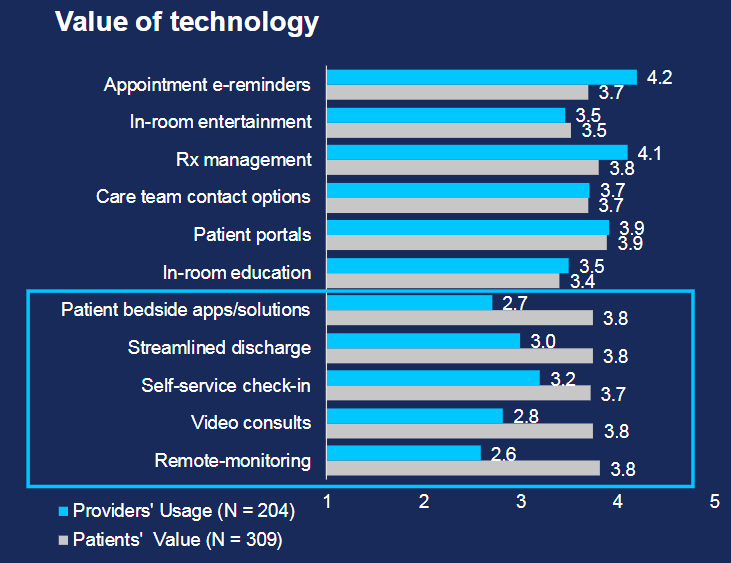Improve patient experience with technology that patients prioritize

Many industries are increasingly focused on customer experience and are leveraging technology to drive improvements. Healthcare is no exception and is focused on “patient experience.”
Patients expect the benefits of technology advances throughout their care journey in the immediate future. Picture it: Before they ever reach the hospital, patients receive digital appointment reminders. During their stay, patients have options to engage with in-room entertainment, educational content and self-service bedside applications. After discharge, remote monitoring is available and allows patients to continue a care regimen at home.
After all, patient experience is “the sum of all interactions, shaped by an organization's culture, that influence patient perceptions across the continuum of care,” according to the Beryl Institute. When thoughtfully implemented, technology can have a significant positive impact on patient experience.
Do we know if these efforts—and investments—are working? Do hospitals and health systems have a good understanding of what really matters to patients when it comes to their healthcare experience?
To answer these questions, Spectrum Business for enterprise partnered with HIMSS Analytics to conduct a study with more than 200 healthcare provider organizations and 300 patients.
Listening from the outside-in
The study uncovered a gap between healthcare providers’ investments and the technologies that patients value highly. In fact, the HIMSS Analytics study indicated that healthcare providers often fall prey to the “inside-out” approach to patient experience.
When healthcare organizations work from the inside-out, they push technologies toward patients, often informed by Hospital Consumer Assessment of Healthcare Providers and Systems (HCAHPS) scores. The study indicated that, in fact, patients rarely consider HCAHPS scores, but they do place a high value on technologies that support interactivity across the care continuum.
Aligning technology investments with patients’ PX priorities

The above graph highlights the usage of patient experience-focused technologies by healthcare providers (blue bars) versus the value patients find in those technologies (grey bars). The graph indicates that healthcare providers should be focused on technologies that enable the patient to engage and interact with their care.
- Patients indicated bedside applications (to view test results, view daily agenda, order meals request assistance and room controls such as lowering blinds or climate adjustments) were of high value. This type of technology is emerging as interactive patient systems.
- Patients indicated remote monitoring and video consults are of high value. These services can be grouped under the telehealth umbrella.
These technologies have some important commonality:
- Each of these technologies support the interactivity that patients demand across the continuum of care.
- All of these technologies require a secure and reliable digital infrastructure to operate.
To gain more insights, get the Patient Experience Study.
Keep up on the latest
Sign up now to get additional stories on connectivity, security and more.
Forms cannot be submitted at this time. Please call to speak with a representative.